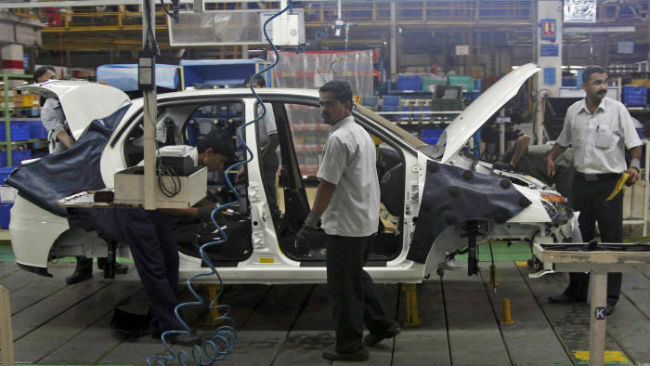India’s stalling car market sparks wider concerns

FT, May 15, 2019
by Simon Mundy
As India overtook China to become the world’s fastest-growing major economy, its buoyant car market was a conspicuous sign of its momentum.
Driven by growing urban disposable income, the car sector enjoyed robust growth as sales surged, with global giants such as Hyundai vying for market share with dominant incumbent Maruti Suzuki.
Its rapid expansion between 2015 and the first half of last year prompted predictions that India would soon overtake Japan and Germany to become the world’s third-biggest motor market.
But figures released this week showed a sudden reversal of that upbeat narrative. Last month, passenger vehicle sales were 17.7 per cent lower than a year before, according to the Society of Indian Automobile Manufacturers.
The pain was severe across all vehicle categories, which are closely watched as economic indicators. “Two-wheeler” sales, an important sign of rural economic health, fell by 16 per cent, while commercial vehicle sales declined 6 per cent.
For some foreign carmakers, the Indian market has been a tough nut to crack despite the success of Hyundai, Honda and Toyota, which have built up a significant presence in the country. Some big western groups have struggled to compete in the market, where Maruti Suzuki last year held a share of 51 per cent.
General Motors stopped sales in India in 2017 as part of a retreat from its less successful national ventures, and media speculation has been swirling about Ford ceding control of its Indian operation to local peer Mahindra & Mahindra.
The latest data add to concerns about flagging economic momentum in India, reflecting weak job growth and the impact of a squeeze in the credit market.
Unfortunately for Narendra Modi, prime minister, these worries have arisen in the middle of a general election where he has presented the government as an architect of growth.
“It reflects a broader lack of confidence in the economy — the entire consumption sector is slowing down,” said Prabodh Agrawal, chief financial officer at IIFL, a financial institution. “Liquidity is tight and confidence is low.”
Industry observers now fear that the car sector has become one of the most prominent victims of a debt market crunch that began last September, when defaults by infrastructure and finance group IL&FS triggered sharp outflows from mutual funds.
That drained money from the commercial paper market, a major source of funding for the nonbank financial companies that had driven the growth of loans as they took market share from the ailing state-controlled banks. The so-called NBFCs were particularly active in areas such as vehicle loans and lending to small businesses.
“In smaller towns and cities, NBFCs really control the [vehicle financing] game,” said Puneet Gupta, a car analyst at IHS Markit.
The motor industry had already been flagging after a strong first half of 2018, but sentiment darkened more seriously as the credit squeeze fed through.
“For everyone I speak to in the market, November was a turning point — there was a ripple effect from the NBFC crisis,” said Anant Goenka, managing director of Ceat, the country’s biggest tyre producer.
The tighter credit market has been reflected in India’s economic growth figures: gross domestic product grew at 6.6 per cent in the last quarter of 2018, the slowest pace for five quarters.
But some economists suspect that the official figure is flattering the true state of the economy, with the more gloomy data on cars a better indicator.
This is because passenger car sales are a crucial sign of high-end urban consumption, which accounts for more than a third of total consumption in India, said Ritika Mankar, an economist at Ambit Capital.
Falling sales of motorbikes and tractors, meanwhile, are seen as a reflection of pain in the rural economy, where farmers have appealed for strong government action to reverse falling food prices.
Additionally, falling commercial vehicle sales are seen as evidence of declining credit supply to small businesses.
Back